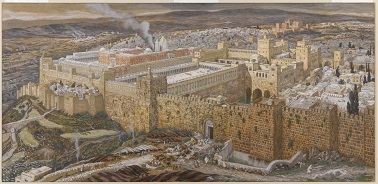Did everyone in ancient Israel agree on what their worship space—the temple—should be like?
The temple dedicated to YHWH is probably the most well-known building mentioned in the Bible. Since its purported site remains at the centre of Jerusalem and attracts thousands of visitors, it is no surprise descriptions of it still fascinate. The Hebrew Bible contains two notable passages depicting the temple:
First Kings describes a functioning temple, at the heart of a bustling Jerusalem, with many people coming and going. First Kings suggests a real, tangible place described by someone who has seen it. By contrast, Ezekiel speaks of a temple outside the city, with no humans in it, that appears to the prophet in a vision (
The temple’s dimensions illustrate this too.
The two also differ on who can enter. First Kings has priests working inside the temple and interacting with many people in the temple’s outer areas. Ezekiel allows no humans inside whatsoever. YHWH resides within the temple, behind a barrier that excludes humans, who might contaminate the temple. Even priests serve YHWH from a distance. Ezekiel—written after the destruction of Jerusalem in 587 BCE, which is attributed to improper worship of idols and the sun in the temple—requires such restrictions to maintain the purity of the temple. The two texts do share the belief that human conduct can defile the temple. First Kings thinks trained priests can manage that risk; Ezekiel concludes humans cannot be trusted to enter these sacred spaces again.
A memorable part of Ezekiel’s temple vision is a river that flows from the temple, heading east, growing wider and deeper, until it filters into the Dead Sea (
Bibliography
- Cogan, Mordechai. I Kings: A New Translation with Introduction and Commentary. New Haven: Yale University Press, 2007.
- Cook, Stephen L. Ezekiel 38–48: A New Translation with Introduction and Commentary. New Haven: Yale University Press, 2018.
- Hundley, Michael B. Gods in Dwellings: Temples and Divine Presence in the Ancient Near East. Atlanta: Society of Biblical Literature, 2013.


